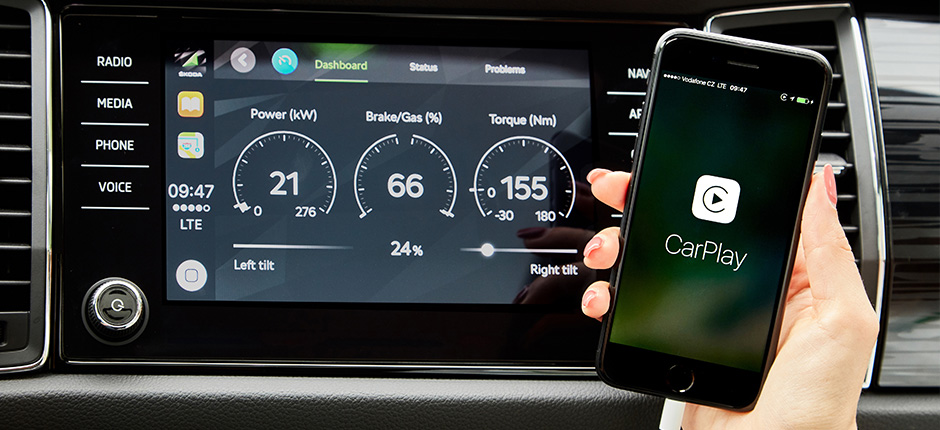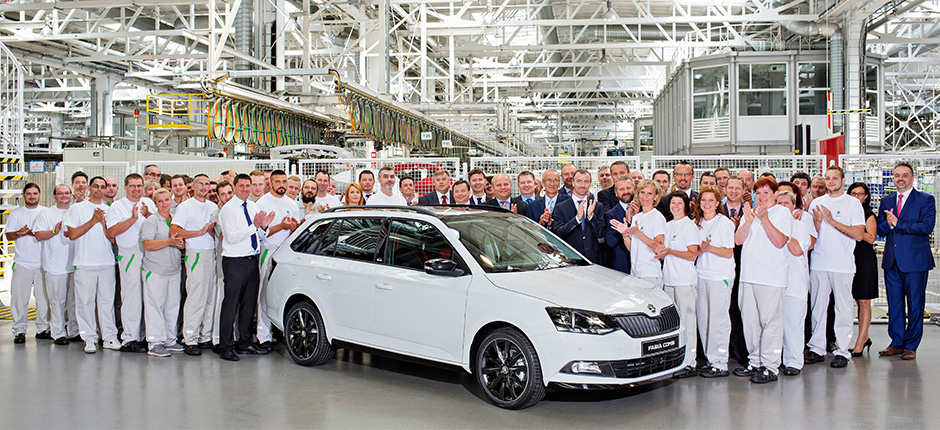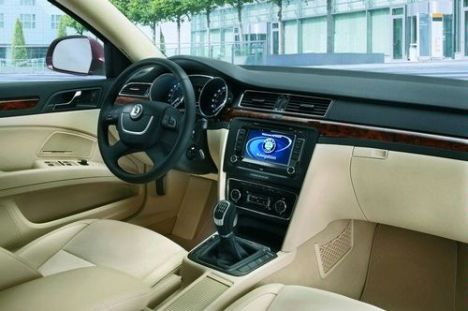Real-time driving data, driving stats, logbook and other features available in one application. Innovative functions for analysing driving style, checking vehicle status, navigation and entertainment.
Using the new smartphone application ŠKODA OneApp, useful information such as fuel consumption, driving dynamics, navigation and service information can be displayed and managed on the screens of smartphones and also the infotainment system. The driver can leave their smartphone in one of the ŠKODA’s storage compartments and see and go through the ŠKODA OneApp’s functions with ease on the large touch-screen display.
With the smartphone application ŠKODA OneApp, ŠKODA reaches a new level of connectivity between the car and smartphone. The app uses SmartLink+ technology to share and display selected functions and information from the car via the ŠKODA infotainment system or smartphone screen. Once the app has been installed on the phone, it enables access to the wide spectrum of functions ranging from accessing relevant engine and vehicle data or information about the weather. For example, ŠKODA drivers can use the ‘advisor’ function to analyse their driving style and learn how to save fuel by driving more efficiently. In terms of driving dynamics, speed and navigation information, the ŠKODA OneApp supports the driver in every situation and provides them with relevant information regarding modern mobility. The ŠKODA OneApp logbook feature, for example, guarantees complete traceability for all past trip records. Streaming music libraries are planned for future versions.
The car and smartphone can be easily connected via USB or WiFi with the navigation systems Amundsen and Columbus. The ŠKODA OneApp can be activated and controlled either via the smartphone screen or the vehicle’s infotainment system – using your fingertip. This means that with just one application, an array of digital services can be accessed that surpass all previously available in-car apps. The ŠKODA OneApp is available to download free of charge from the AppStore or Google Play and can be used in all ŠKODA vehicles built after June 2016 that are equipped with SmartLink and USB, or have SmartLink+ and connect to the smartphone via USB or WiFi.
The most important features of the new ŠKODA OneApp at a glance:
REAL-TIME DRIVING DATA
This function records the car’s performance parameters during your journey and allows information about driving dynamics, rpm, acceleration, fuel consumption and speed to be accessed in real time. The number of instruments is complemented by additional displays on the in-car monitor featuring graphical representations of the figures – for example, for torque, average fuel consumption or lateral acceleration when cornering in a sporty manner.
DRIVING STATS
Using the ŠKODA OneApp, ŠKODA drivers can access a wealth of stored driving data to analyse their driving style in detail. The statistics provide important indicators for making optimal use of the car’s performance and to increase the efficiency of future journeys. The ŠKODA OneApp also keeps personal bests, such as lowest consumption or highest efficiency.
LOGBOOK
This feature allows drivers to view precise and reliable trip data. The Logbook function helps to make mileage reimbursement hassle-free and shows the number of kilometres officially or privately driven in chronological order.
POI & NAVIGATION
With different partners ŠKODA provides OneApp users with navigation information. User can very easily find Points of Interest (POI) in OneApp environment and send it directly to integrated navigation or to partner navigation applications. Navigation information could be thanks to them based also on satellite images. This realistic display of the surrounding area could make orientation easier in many situations.
In addition to POI in the area, all nearby petrol stations are also displayed on the map and, depending on the availability of information from the vendor; even current fuel prices are compared. When showing prices, the system also knows whether the car requires diesel or petrol. In addition, it displays the most convenient and fastest route to the selected petrol station.
courtesy: www.skoda-auto.com






 Skoda will enlarge its range from today’s five models to seven models within five years — and the line-up will include a five-door coupe.
Skoda will enlarge its range from today’s five models to seven models within five years — and the line-up will include a five-door coupe.